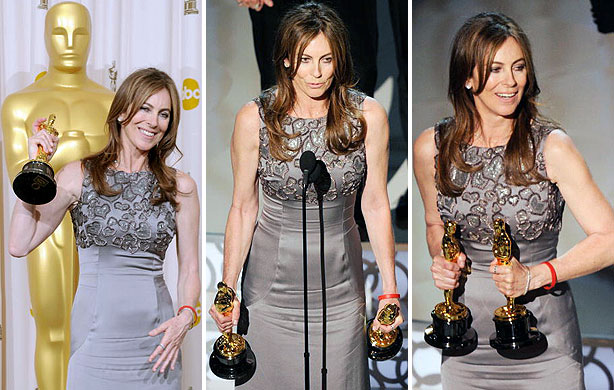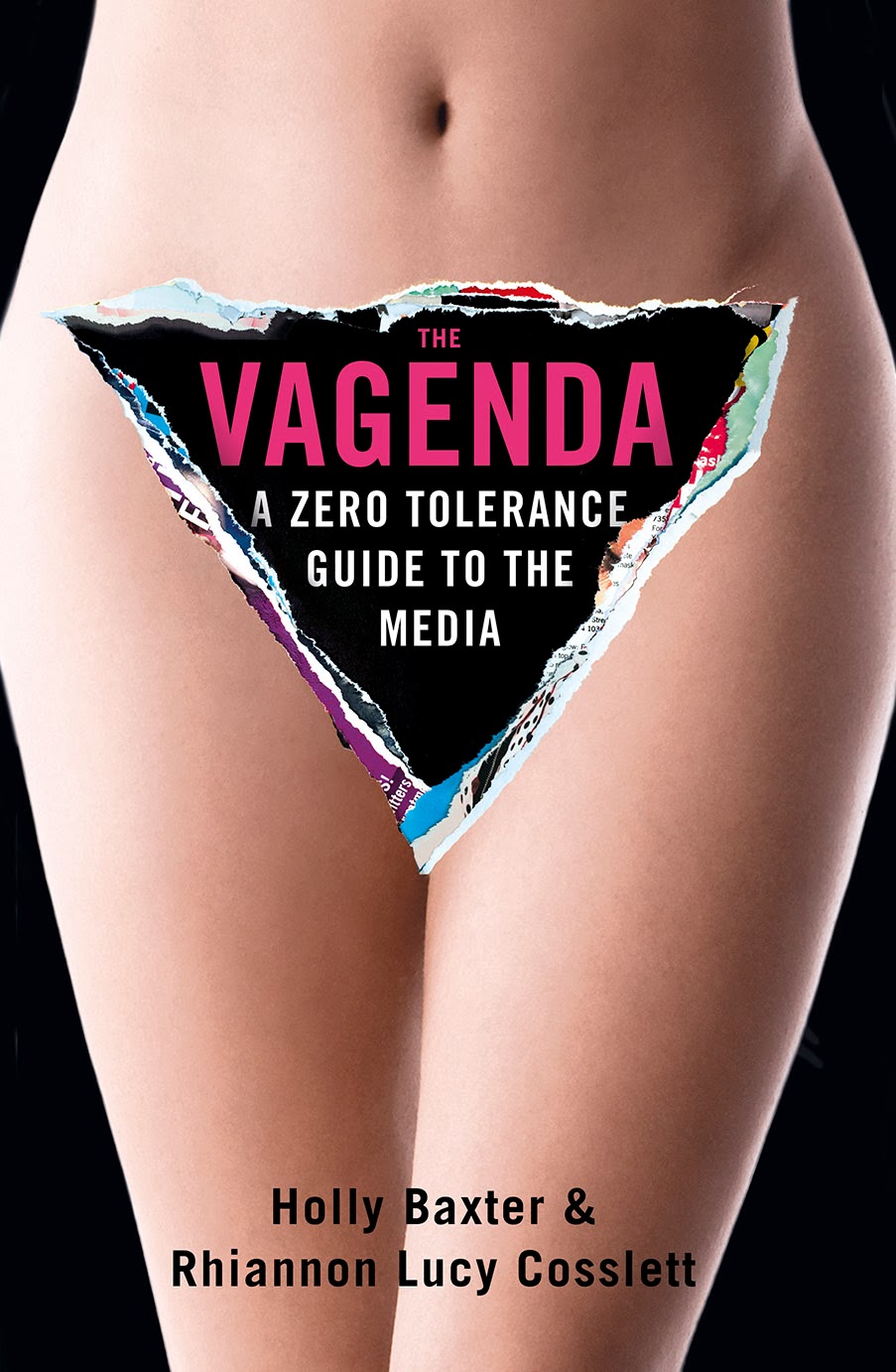
Recently the BBC reported that women are still struggling to make their mark in Hollywood. This much is obvious from a glance – how many female directors currently working can you name that aren’t Kathryn Bigelow? – but the scale of this under-representation might come as more of a surprise. Staggeringly, the study cited revealed that of the top 250 grossing Hollywood films in 2012, only 9% were directed by women. To rub salt in this gaping wound, this miniscule statistic actually counts as good news – whip out the bubbly, ladies, it’s a 4% increase on figures in 2011!
When Bigelow lifted the Best Director Oscar in 2010, it was a cue for the media to start gabbling hysterically about watersheds and turning points. The image of this tough, fiercely intelligent, conveniently photogenic woman holding her hard-earned elegant statuette/ miniature baldy man/primitive phallic symbol triumphantly aloft was a photo opportunity worthy of a Weinstein wet dream. Look, guys – chicks can make moving pictures, too! Moving pictures with explosions that men aren’t embarrassed to watch without their girlfriends! And look how cute she looks carrying that megaphone! As Collin Welland very nearly said back in the 1980s, “The bitches are coming”.
Fast forward two years from Bigelow’s triumph and she’s helming an Oscar contender once again, another film set in a traditionally masculine environment with a predominately male cast, albeit this time with a brilliantly powerful female lead. Yet the present atmosphere feels somehow less hospitable; the ovary-shaped balloons are deflating rapidly, the pink champagne has lost its sparkle. Zero Dark Thirty has been nominated for Best Film, but Bigelow herself has been very publicly snubbed with no Best Director nod. In fact, Bigelow has become the target of a nasty, unnecessarily personal witch hunt driven by nonsensical claims that her film somehow promotes torture simply by representing it. You know, in the same way that Django Unchained wistfully eulogises slavery and Crash is a recruitment video for racists.
It’s an Oscar tradition up there with the eye-gouging musical number that one film a year will become the target of a hysterical backlash that will fade into absurdity once the moment’s passed. Do you remember the Slumdog Millionaire poverty-chic row? Or Kim Novak’s jawdropping claim that The Artist’s licensed use of music from Vertigo was somehow tantamount to a sexual assault? The Zero Dark Thirty torture fiasco is more understandable than the spectacularly dunderheaded Novak-gate, but the claims are still utterly risible to anyone with eyes, access to a few decent news websites and functioning cognition.
Nonetheless, it’s disheartening that the chosen victim this year has been the lone female director success story of recent years, and hard not to speculate that the unusual ferocity of this year’s vitriol might have been heightened by the gender of its target. This observation is all by-the-by. It’s impossible to expand out the brackets of this particular equation and identify the impact gender has had on the media sprawl. Suffice to say, there are lots of reasons for people not to like you in the Hollywood circus, but it rarely helps if you’re a prominent figure who doesn’t fit the mould. Sticking your nicely coiffed head above the parapet of majority default is asking for pot-shots.
As always, the slow evolution of physical change lags behind the surges of symbolic change, but even allowing for the time lapse, it’s sobering that numbers of female directors in Hollywood remain so pitifully low post-Bigelow. The research carried out by the Centre for the Study of Women in Television and Film may display a slight increase, but it’s hard to identify any real change of attitudes towards women in film, or to find many young female directors who look likely to break through into the mainstream in the near future. The problem of underrepresentation of women (and indeed all minorities – but that’s another dozen blog posts) in filmmaking remains as prescient as ever, and it’s all the more depressing when you consider how many more powerful women there appear in other art forms – theatre, literature, visual art and popular music all come across like Steel Magnolias in comparison.
The shards that compose the Hollywood glass ceiling chime with those in most male-dominated professions. As in all creative industries, success is about networking and nepotism is rife. There’s the usual issue of work-life balance, boardrooms and cinema sets making similarly arduous demands of women during their childbearing years, the closed executive door rarely opening for those who’ve failed to maintain the punishing work schedule whilst pushing future generations out of their vaginas. For those not interested in starting a family, the infamous chicken and egg issue persists – most employers tend to employ in their own image, so an industry dominated by white, middle aged men seems doomed to a cyclical sausage-fest.
There are glimmers of hope. The independent sector boasts a greater proportion of female directors– we’re talking very slightly greater, between 14.5-22% according to this Sundance study. While Bigelow is pretty much the only female who’s truly conquered mainstream Hollywood cinema, it’s easier to conjure up impressive names purveying more art house fare. The queen is probably Jane Campion, her of a naked Harvey Keitel in The Piano and a clothed Ben Whishaw in Bright Star, but other names that spring to mind are Sarah Polley who headed last year’s acclaimed Take This Waltz, Lynne Ramsay, the Scot who spun We Need To Talk About Kevin into a cerebral horror flick, and Lisa Cholodenko, the brains behind 2011’s immensely likable The Kids Are Alright.
Art films by their nature generally play only to a niche audience and thus their influence is limited. There is always the possibility that directors born in the art house sector can jump over into the mainstream – Catherine Hardwicke, director of the moody teenage girl centric Thirteen carried her art house sensibility over into moody teenage girl centric mainstream fare Twilight and Red Riding Hood – but only a tiny number make this transition. There’s a real risk that these directors are being painted into a corner, female directors trapped in the art house ghetto after their desire to stay has waned. Not every independent filmmaker yearns to helm a Bond or a Marvel blockbuster, of course, but it’s hard to believe that no woman has ever wanted to take those kind of jobs. And if women are never allowed within sniffing distance of huge mainstream work courting huge audiences, then their voices are being effectively censured. Is it any wonder that there is such a deficit of good female parts for older women, or that mainstream blockbusters often still brainlessly peddle leering light pornography to teenage boys, when so few films have a woman in the driving seat?
Perhaps it’s Pollyanna-ish to care this much about how women fare in an industry so far removed from most people’s daily lives. I’ll admit this is a problem that pales in comparison to declining numbers of female politicians and the disproportionate impact of public sector cuts on ordinary women and all that gritty, devastating, life-or-death stuff. But to many people movies are a vital part of real life, our way of escape but also, significantly, our way of processing the world. How often do you as a woman find yourself demoralised by the passive, perfect, cardboard-cut-out female characters you’re seeing from the comfort of your cinema seat?
I can’t help thinking that real changes in the way women are portrayed on film could lead to incremental changes in the whole of society. Hollywood is a mirror, and while sometimes we find the glass is cracked, or that it’s sending us a distorted funhouse reflection, having better, more genuine, believably rounded female protagonists regularly projected into our cinemas and living rooms must surely have a subliminal impact.
But the only way we can see complete equality in front of the camera is by having complete equality behind it.
-RP


You forgot Sofia Coppola. I’m no fan, but she’s there.